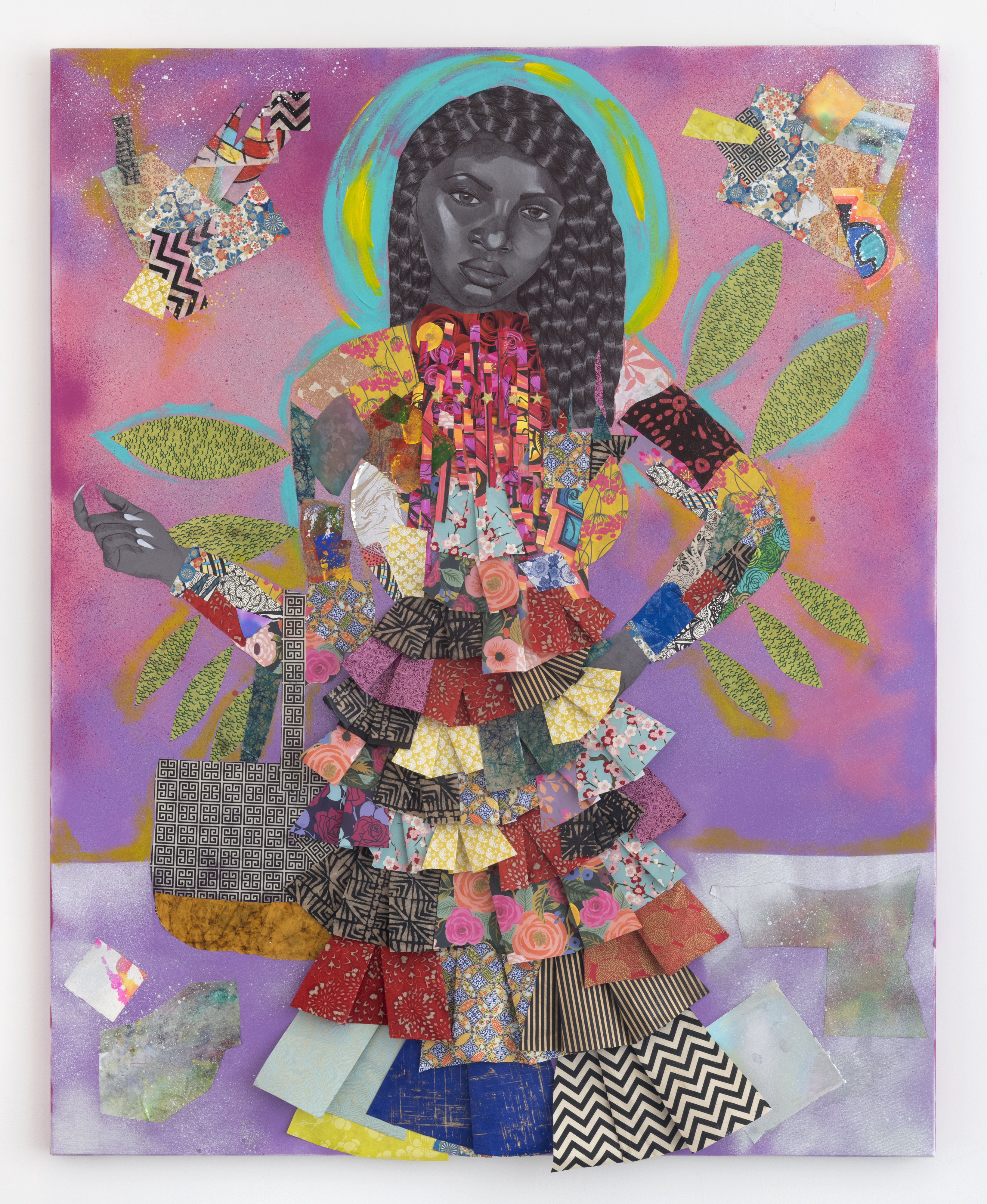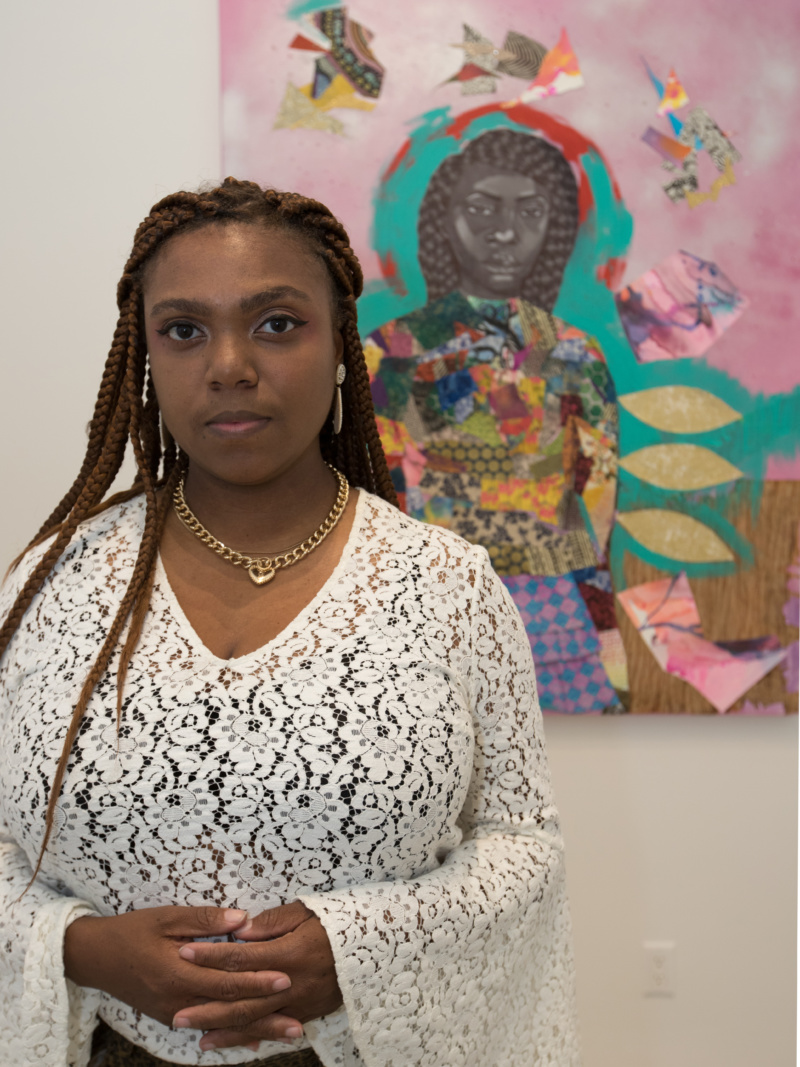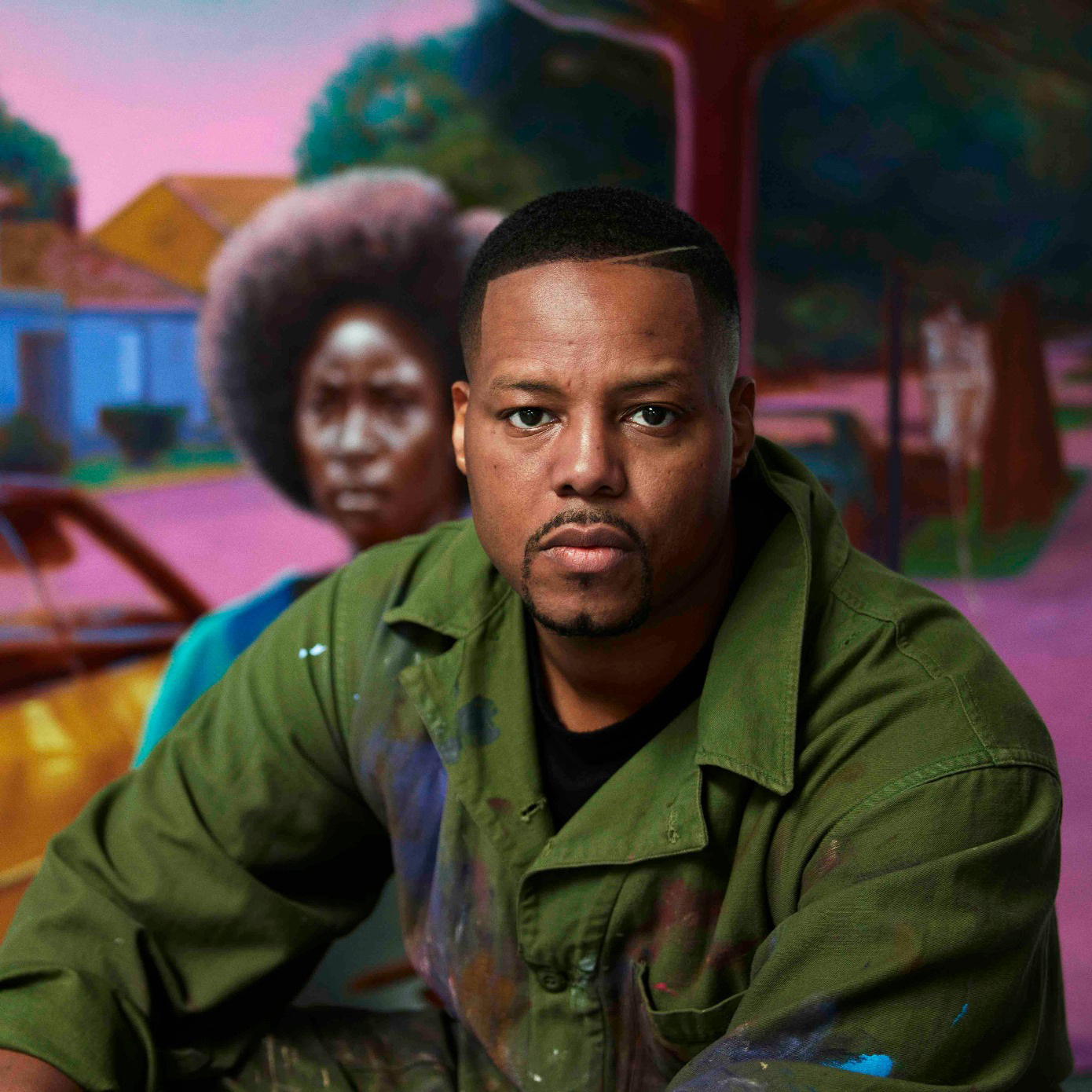
What do you do when you are trained as a painter and your main medium is oil, but as a mother of three you have to work from home for many years without a proper ventilation system? For Jamea Richmond-Edwards, the solution came through resourcefulness and ingenuity. As an answer to one of her dilemmas, the sculptural quality of the faces in her work is rendered by a simple ballpoint pen. “Ink provided a similar permanence to oil. It isn’t fluid, but I love the rawness of it.” If one looks up close at any of these portraits, the word “rawness” doesn’t come to mind—the faces made by Richmond-Edwards look as if they were 3-D and their eyes gaze back at their spectator with defiance and determination. A second inventive solution gave birth to the collages that form the bodies of her subjects. Combinations of layered paper in hundreds of different patterns and colors are glued onto her canvases, whose backgrounds are made of glitter, acrylic and spray paint.
Richmond-Edwards pays homage to her upbringing on the West Side of Detroit during a time characterized by a lavish dress-up culture turned up to the nth degree seen through the style of hip-hop figures like Biggie Smalls, Ice Berg and Puff Daddy. She confesses that she was a fan of Coogi sweaters, the Australian brand whose kaleidoscopic knits inspired by intricate aboriginal art were popularized by rappers of the ’90s. “The collages represented a reappearance of an interest and fascination I have with fashion. This flamboyancy is inspired by my mother and the women in my family.” In Detroit, people used fashion as escapism, as a way of expressing oneself and of asserting power through clothes. Their garments were sometimes the real thing; sometimes they were knock-offs. There is a nod here to the “boostin’” culture (a practice of buying fake clothes and accessories and selling them at hair salons or in boosters’ homes), which was common in Detroit 20 years ago and is what made fashion icon and stylist Dapper Dan both an infamous character in ’90s Harlem and a darling of high-end brands today.

The women represented in many of her paintings are self-portraits with altered features: they have their hair styled in cornrows and their expressions are solemn and intense. “I look younger than my age,” says the 36-year-old artist, “and I want to be taken seriously. I don’t like the dismissiveness that comes when people think I am a child. My women are resilient and stoic. Since colonial times, the history of black people in this country has been filled with adversity and we’ve always found ways to overcome it.”
Now a resident of Washington D.C., Richmond-Edwards explains that when she left Detroit 18 years ago to pursue her BFA at Jackson State University in Jackson, Mississippi, and then her MFA at Howard University she realized how extravagant the style of her hometown could be, and as consequence, has toned down her own (even though when we met she was wearing leopard print jeans, snakeskin flats and a white lace blouse complete with a thick gold chain necklace).
Richmond-Edwards is having quite a year. Following her sold-out solo show at Kravets Wehby Gallery in New York this past April, she has several works at the Rubell Family Collection in Miami, on view as part of their “New Acquisitions” exhibition.
Richmond-Edwards now has a studio outside her home and is devoting her time exclusively to her practice. Before we part ways, she tells me “what these pieces symbolize is that there is always hope.” And there isn’t a better moment to seize the positive outlook offered by the colorful promise of a better tomorrow that is woven into the multicultural narratives of her work.
Artist Jamea Richmond-Edwards in conversation with Maria Brito from Cultured Magazine on Vimeo




